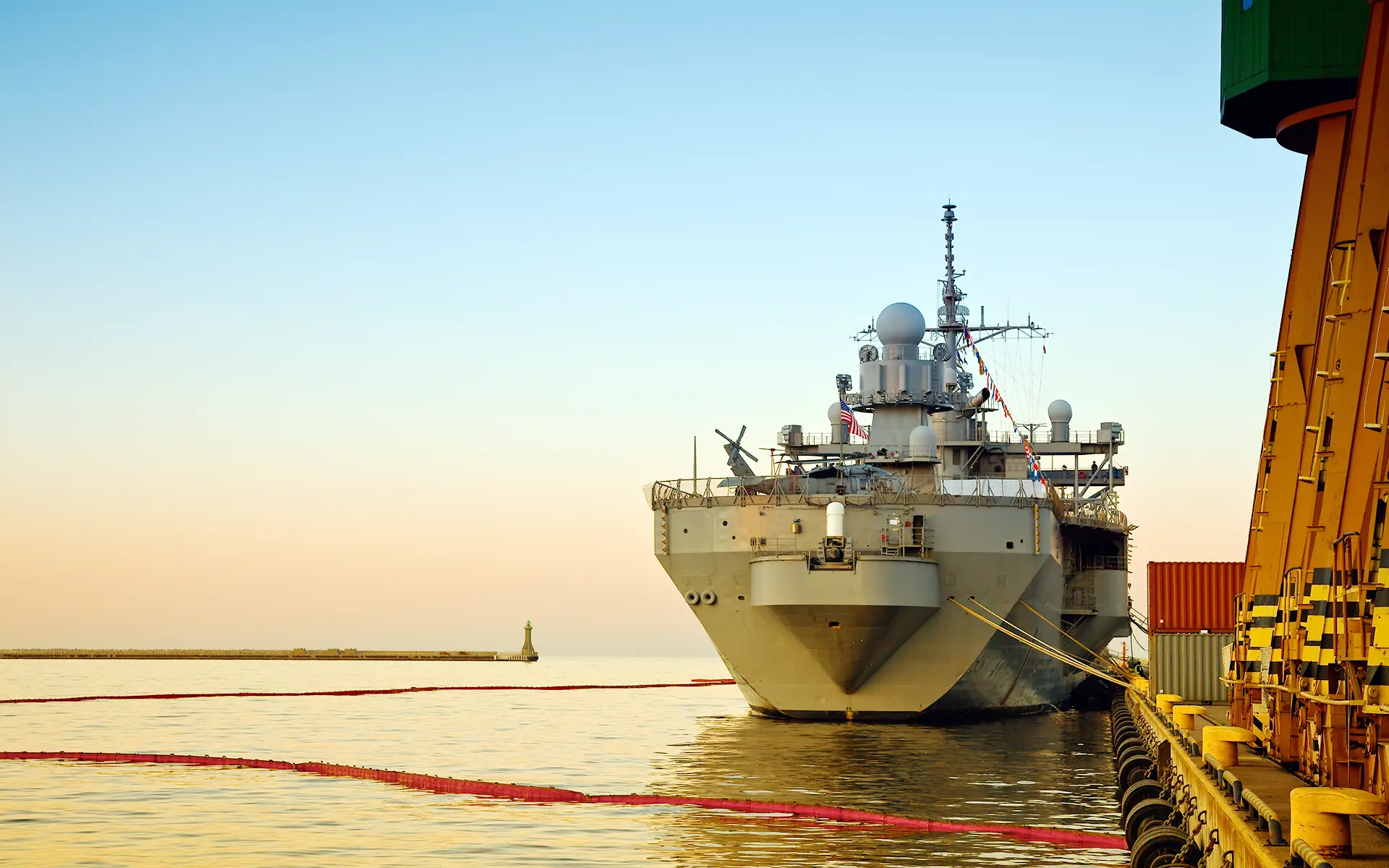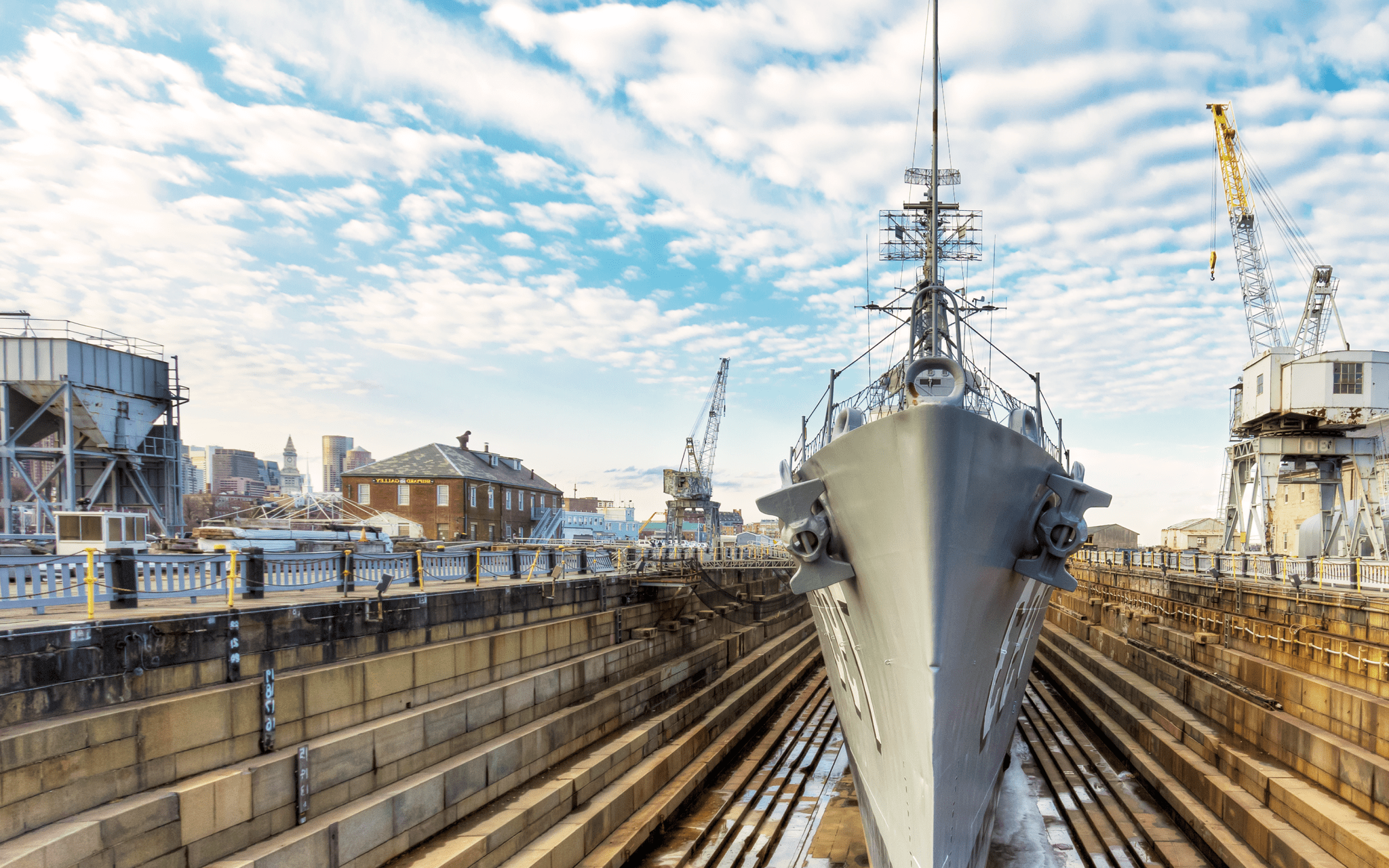Asbestos Exposure on Navy Ships
Compared to the other branches of the military, asbestos exposure levels were highest among sailors in the Navy. Contamination on ships was highest between the 1940s and 1970s, leading to many mesothelioma cases 40 years later.

Asbestos Exposure and Navy Ships
Historically, the United States Navy was a top industry that used a mineral called asbestos. By 1900, the Navy was one of the country’s largest buyers of asbestos due to its heat-resistant properties. For instance, Navy destroyers built for World War II carried up to 30 tons of thermal insulation containing the mineral; the USS Iowa class of battleships had almost 465 tons of thermal insulation. For decades, “virtually every pipe and many of the ventilation ducts” on a wide range of Navy ships contained amosite-type asbestos
Unfortunately, determining the total number of sailors and Marines exposed to enough asbestos to potentially lead to mesothelioma is nearly impossible because of its ubiquitous use. In 1979, a letter from the Office of the Chief of Naval Operations said it was “nearly impossible to build a Navy ship free of the mineral.” The letter reported 87,634 pounds of contaminated thermal insulation aboard the USS Paul F. Foster (a destroyer class of ship), not including asbestos found in pipe hanger liners, gaskets, electric cables, etc.
With so much of the cancer-causing agent in active use, military leaders believed it simply was “not possible to change, in an instant, from asbestos insulation to non-asbestos insulation throughout the Navy fleet.”
Government Asbestos Removal Efforts
During the same time, when the Government Accountability Office (GAO) surveyed asbestos removal efforts at the Long Beach and Norfolk Naval Shipyards, they found the Navy had made “considerable efforts” in protecting workers from the carcinogen in their work environment. However, simultaneously, workers often disregarded safety guidelines because:
- Protective clothing made sailors hot. When they removed or opened protective coats, they exposed their skin.
- It was difficult to move around confined spaces with a full-face respirator and air supply line. Some sailors chose to use smaller masks without airlines or forego masks completely, leaving them open to asbestos exposure.
- Cleaning work areas often meant using compressed air. When sailors used compressed air to clean areas with asbestos dust, they filled the air with the dangerous fibers.
Veterans who were diagnosed with mesothelioma may be eligible for VA compensation. To find out if you qualify, speak with a patient advocate today.

Areas Affected by Asbestos on Navy Ships
Aboard Navy ships before 1980, asbestos could be found nearly everywhere. As stated above, pipes and electrical cables of every variety were likely covered with the mineral in some form. Elsewhere on board, other areas affected by asbestos included engine and boiler rooms, mess halls (cafeterias), navigation decks, and even dormitories (sleeping quarters). According to a Veterans Affairs (VA) factsheet, sailors who were involved in the following activities were also exposed:
- Renovation of asbestos-containing materials
- Sailors on ships with keels laid prior to 1983
- Shipyard workers between the 1930s and the 1990s
- Seamen working below deck prior to the 1990s (due to poor ventilation)
Most asbestos on Navy ships was due to thermal insulation coverings (eventually replaced by fiberglass). In the 1970s, the amounts of contaminated thermal insulation found onboard most types of naval craft are detailed below.
| Type of Navy Ship | Pounds of Asbestos Insulation | Examples of Affected Ships |
| Destroyer | 87,634 | USS Spruance, Paul F. Foster, Kincaid, Elliot |
| Guided Missile Cruiser | 123,770 | USS California, South Carolina |
| Large Harbor Tug | 6,858 | USS Hyannis, Pawhuska, Chetek, Wathena |
| Replenishment Oiler | 78,515 | USS Kalamazoo |
| Submarine | 62,465 | USS William H. Bates, Tunny, Parche, Crevalle |
Certain sailors were exposed to higher levels of hazardous fibers than others. In one study of Puget Sound Naval Shipyard’s workforce, 21 percent of people working as pipe-coverers and insulators suffered pulmonary abnormalities (i.e. lung damage) due to exposure, compared to just 3.5 percent of boilermakers with some exposure to the mineral. People who worked in clerical areas with no known exposure reported less than 1 percent in lung damage.
Other Occupations at Risk
Too, the study found that enlisted members between 1940 and 1970 (particularly during and after WWII and the Korean War) were the most likely to develop diseases like mesothelioma from high airborne concentrations of the fibers. Longshoremen and shipyard workers experienced the highest concentrations of hazardous material. Other Navy jobs with a likelihood for exposure include:
- Boiler operators
- Building renovators
- Demolition specialists
- Hull technicians
- Machinists
- Pipefitters
- Welders
Since the start of the wars in the Middle East, some Navy personnel may have been exposed to dangerous levels of asbestos from collapsed buildings. Though they may not exhibit symptoms of lung disease like mesothelioma for decades (due to its long latency period), it is vital that veterans of these wars receive regular checkups with a doctor and be aware of possible side effects of exposure.
Veterans with mesothelioma can take action without affecting their benefits.

Compensation for Mesothelioma Related to Navy Service
Whether you or a veteran you know have been diagnosed with mesothelioma or another asbestos-related illness, you may be eligible for veteran benefits. Disability benefits are available to those with an illness or injury caused by contact with the mineral during their time in the military and have an other-than-dishonorable discharge. Health care and financial compensation are available to these veterans (or, for deceased veterans, their family members may receive benefits).
If interested in filing a VA claim for benefits related to exposure, you’ll need:
- Medical records with proof of disability, illness, or injury
- Military service records with job specialty
- Doctor’s statement linking military service with the asbestos-related disorder
How to File a Legal Claim
Military veterans may also seek compensation by taking legal action against the companies responsible for the production of asbestos-contaminated material used during their service. Veterans, regardless of their type of discharge from service, may receive financial restitution for mesothelioma or other asbestos-related diagnoses. These types of lawsuits do not charge the Navy or other branch of government with liability and will not affect a veteran’s VA benefits.
An experienced mesothelioma attorney can guide you through the process of filing a lawsuit or filing a claim against an asbestos trust fund. Contact us today for a free case evaluation by a lawyer who specializes in asbestos law.

